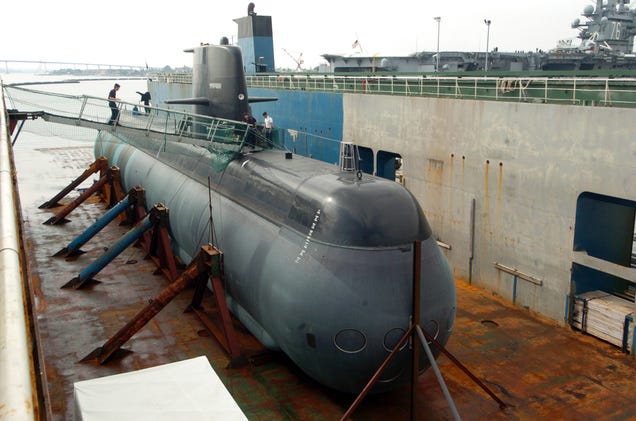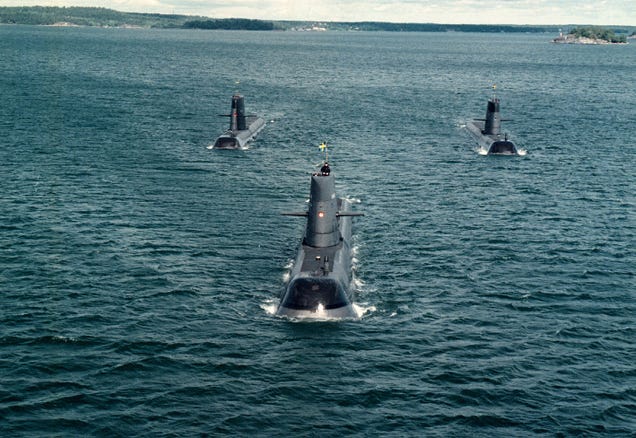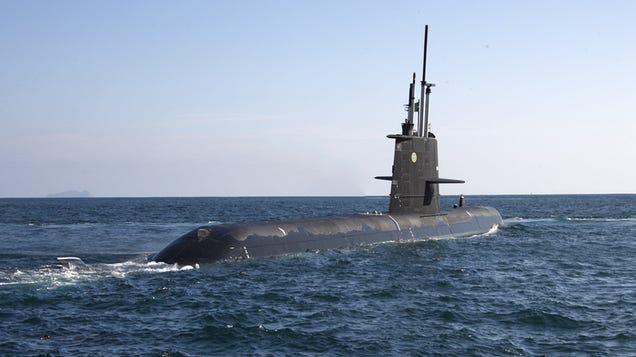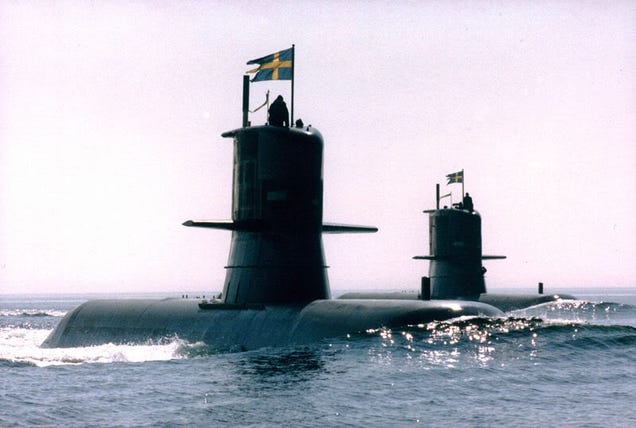![Listen Up Philip and Other Men at Their Wits' End: NYFF Dispatch Four]()
Film writers Fariha Roísín and Sara Black McCulloch are covering the New York Film Festival this year as a series of conversations about the festival and its programming. The fourth dispatch includes Alex Ross Perry's Listen Up Philip, Alejandro G. Iñárritu's Birdman and Laura Poitras' Citizenfour.
Sara: Hello again, and welcome to the final NYFF dispatch! We know the festival ended over a week ago, but there were some other films we wanted to discuss that didn't make it into our initial festival coverage. Again, as always, there will be spoilers.
In this dispatch, we'll be discussing Alex Ross Perry's Listen Up Philip, which stars Jason Schwartzman as Philip Lewis Friedman, a self-involved, self-deprecating, etc. etc. novelist. And while this sounds like a portrait of the artist as a young asshole feature—wait, because the story also focuses on a person in Philip's much-neglected outer world: his photographer girlfriend, Ashley (played by Elisabeth Moss). The film focuses more on the consequences Philip faces, but it's also a touchstone of all the ways to alienate every single person in one's life.
We also have Birdman or (The Unexpected Virtue of Ignorance) by Alejandro G. Iñárritu. Riggan Thomson (played by Michael Keaton) is one-time superhero (hello, Keaton-Batman) who is trying to freshen up his image.
Finally, we have Laura Poitras' Citizenfour, a compelling documentary about privacy, power, press freedom, and paranoia. Poitras chronicles the events leading up the revelation of Edward Snowden's identity. It discusses the ethics of exposing the truth. It's a more in depth look at the many ways both media and government brand and pursue whistleblowers.
So, Fariha, let's begin with Listen Up Philip, which sparked a lot of emotions.
Fariha: Oh man, I loved this movie so much, which was really surprising to me. I think part of the reason it resonated was because there seemed to be a self-awareness to the writing, and to the characterization of Philip. I haven't watched Perry's last film, The Color Wheel in a while, but I remember that I didn't like it as much. Despite that, it must be said, that as a writer, Perry is charming. He has a great ability to create flowing dialogue, which is definitely a part of why his films are so endearing to watch; the conversations are organic and languid. I loved the banter in this film, like when Philip meets up with ex-girlfriend for lunch, and he has a copy of his latest novel—Obidant—and he's just sitting there emphasizing all the great things that are happening in his life, and his ex says, "It sounds like you're bragging," and he cuts in, with perfect timing, and responds with a deadened: "That's because I am." It was moments like that that made this film so enjoyable.
I know you and I have come across men like Philip countless times, especially being writers, and it seemed to be both a caricature of this misanthropic man-child who's incapable of expressing his emotions, stifled by jealousy and greed, and yet also someone who inevitably wants human connection and is constantly seeking validation. Philip is bright and manipulative, but he's aware of both of those things, and there's a charm to his self-hatred that I found surprising. Usually, men like Philip are the bane of my existence—both in art and IRL. But there's the sadness of his character that overrode the frustration of him.
Also, of course, his acerbic qualities were balanced out so beautifully by his girlfriend, Ashley, and also the supporting female characters—Melanie (Krysten Ritter) and Yvette (Joséphine de La Baume). Ashley has agency, and in fact, I felt, the movie was sort of cut in half by her trauma and struggles of being a person on the other side of Philip's incapabilities of being a good boyfriend and partner. She's juxtaposed against the darkness of Philip, cutting through his self-obsessed nature, showing that behind every mean-spirited New York writer, there's a very cool, together girlfriend.
Ross proves that having these Philip Roth male-centric stories also benefits from having a female voice. Ashley's integral to the movement of the story, in fact if she wasn't a part of this framework, this narrative wouldn't have been so powerful, or endearing.
Sara: It was wonderful indulging in a film like this because in real life, you rarely get to see the repercussions of someone's shitty behavior—or at least the full spectrum of consequences. The only truly honest thing about him is just how open he is about making everyone around him miserable. This is also a film about talented, successful men (institutionally successful and talented) who justify their shitty behavior with their talent.
Here's what I thought was so genius about casting Schwartzman: Philip would have been so much more insufferable if he had been played by someone else, I think. With Schwartzman, we get comedic pause—we can't help but laugh at him sometimes. I mean, even at the beginning of the film, I couldn't figure out if Philip was joking or if he meant the horrible things he was saying and I think a lot of this has to do with Schwartzman. Also, Philip is a terrible boyfriend and overall human person, but there's this side of Ashley that ignites when she finally realizes she doesn't have to put up with Philip's bullshit. She can change the locks and move on and walk away from this relationship. And that's the hardest part for any woman moving on: just being like "CAN YOU NOT"; just ignoring those empty, supposedly romantic gestures/attempts to rekindle something the dude abandoned in the first place.
Fariha: Which is what makes this film so powerful, and ultimately, what adds to the lasting legacy of it. I was enthralled because there was this truly insightful look into how devastating the end of a relationship is (whether Ross does this purposefully, you can't know, but I appreciate it nonetheless) for a woman, and how when Ashley moves on—when she dares move on—it's only due to her own resilience; there is no other factor. That really resonated with me. Philip still wants to be apart of Ashley's life, and yet he provides no reason, or incentive. He's cheating on her with another woman, but he manipulatively wants her there, to coddle him, to allow him to feel amidst his vapidity. Thing is—men like Philip are ostensibly intelligent. They lack emotional foresight which therein clouds their ability to truly be sentient human beings. Their intelligence isn't layered, it's just boastful and tainted with bravado—that's it!
New York is filled with intellectuals like Philip, these men with hot girlfriends that are fucking their students, or their girlfriend's best friends, because the world is theirs, they have nothing to want for, so they never try to appease anybody else. So the characterization of Philip, and the honesty was a very profound portrait of this man-child phenomenon, and I think the complexities of having these other story lines—even Ike (Jonathan Pryce)—was a re-telling of outward success, and how the singular pursuit of that generally diminishes or trumps one's ability to be a better, well-rounded human being. Ike's tale is a cautionary one, and there's this sense, even though it ends with Philip smiling (amidst scowls) amongst a crowd, his callowness is his downfall. I liked how the narration juxtaposed him and his cocky demeanor. Philip is alone. The end. The denouement was hilarious and satisfactory.
Sara: I also loved the book covers designed by Teddy Blanks—I mean the titles of these books: Madness and Women, Some People are Decent, Obidant, or Too Much Everything. This film is about male writing or the male novelist as an institution (or personal brand, in Philip's case). For instance with Obidant—Philip's new book—the title is set in clouds, an obvious reference to David Foster Wallace's Infinite Jest.
But like you've mentioned, we get this longstanding tradition of writing, with a set trajectory: write a critically acclaimed first novel, write your second novel, retreat to the woods, and teach creative writing at a university. Ike spells this out to Philip countless times, telling him that this is what he, too, did. And yet, as you say, Ike is a cautionary tale and Ike's daughter, Melanie (played by Krysten Ritter), tells him so; she explains how difficult it was growing up with a father like Ike. Ike feeds the ego and he ultimately encourages Philip's downfall.
Fariha: I love how we were able to dissect the portrait of the male novelist.
But moving on—because we were overwhelmed by films at NYFF (which is the best film festival, actually, I love this festival so much) we decided that it'd be better if we each, separately, talked about two different films and their impact on us. I'll start with Iñárritu's Birdman which was just so phenomenal. Seriously, what a brilliant film. Firstly, it was such a viewing experience, so kudos to Iñárritu—Biutiful is actually one of favorite films, and there's the seminal Amores Perros—but Birdman is a completely different animal to even his critically acclaimed movies such as 21 Grams, or Babel.
The directing itself is outstanding, the essentially "one shot" perspective (as in it was made to look like one shot the whole time when it was probably around fifteen shots) was really cinematically powerful. You're watching a play within a play, but it's not as dark as Synecdoche, New York, it's playful and fun and the lighting of the film is infused with stage lighting, so it feels like you're actually on the set yourself.
I loved the casting of Michael Keaton—this once-powerhouse of an actor—playing this somewhat depraved and crazed ex-superstar mimicking Keaton's real life trajectory. Ultimately, having an actor that once played Batman in a huge Hollywood franchise, added a comedic layer that really benefited the story. Keaton's Riggan Thomson is famous because of his portrayal of Birdman, a similar franchise to what Batman was, so it seemed like such a real life portrait of sadness and malaise, quelled constantly by Thomson's outward ego, quite literally Birdman (the deep-voiced thoughts in his head)—a man that is dormant inside of him; the trapped voice of a superhero. Birdman is a rumination of personhood and self-worth in an industry that doesn't really emphasize either. Essentially, once you're a movie star, like Birdman, you are a series of numbers and dollars, your worth is contingent upon how much you can bring in at the box office, and yet, as crazy as that is—Thomson wants that, again. He wants to be relevant again—monetarily, and culturally. This is heavy, but there's such a lightness that exists within the dialogue that truly makes it enjoyable.
Thomson thinks that he can be Birdman again if he directs a play and absolves himself. So, he decides to adapt the Raymond Carver short story "What We Talk About When We Talk About Love" to push his career into a respectable zone. Zach Galifianakis, who plays Jake, his best friend and producer, explains that they're not having much luck with casting a big lead, so essentially they're screwed. Jake explains that Woody Harrelson is doing another Hunger Games, Michael Fassbender is on X-Men duty, and Robert Downey Jr. is Iron Man, so they get Mike Shiner, played by Edward Norton—a cocky big name actor. The fights that ensue between Shiner and Thomson are priceless.
I take this film for what it was—an enjoyable cinematic tale, tying in the complexities of the human condition—as in a lack of self worth, and a desire to be better—amidst great sacrifice. It's also a meditation on the idea of celebrity. There's a scene where Thomson is smoking outside, and the stage door locks him out. He has to walk into Times Square to re-enter the theatre, but there's a hesitation—he's essentially naked because his robe was caught on the door, also. So, he becomes a circus act, he's in his underwear, looks devastatingly #overit as he walks through crowds of tourists that are Vining, Instagramming and Tweeting his on-the-edge-of-it-breakdown. Within the hour there are over hundred thousand views on YouTube of his meltdown, and again we see that he's just a commodity. How much money can his celebrity accrue? Birdman is a truly magnificent film. It's a box-office hit that will also ask a lot of questions about What We Talk About When We Talk About Ourselves—as it should.
Sara: This has been a bit of a theme at festival. You saw Maps to the Stars, which also dealt more with people driven by the wrong things (celebrity and fame, for example)—how did this compare to Maps to the Stars? Did it all?
Fariha: Maps to the Stars, as much as I love David Cronenberg, wasn't my favorite—nor did it encapsulate "celebrity" in the way Birdman did. It was definitely about "celebrities" but more a polarized look at them—there wasn't as much weakness, or humanity. And even though Havana Segrand (Julianne Moore) is a lot like Riggan Thompson, a washed up celebrity, hoping to get another big foot in the door—she's vindictive as opposed to just pathetic. That's about as far as the similarities went.
Citizenfour kind of focuses on celebrity, but a different kind. Edward Snowden is definitely my kind of hero. How was Laura Poitras' portrait of the whistleblower, Sara?
Sara: Citizenfour begins with an email. "Laura, at this stage I can offer nothing more than my word. I am a senior government employee in the intelligence community. I hope you understand that contacting you is extremely high risk. For now, know that every border you cross, every purchase you make, every call you dial, every cell phone tower you pass, friend you keep, site you visit and subject line you type is in the hands of a system whose reach is unlimited, but whose safeguards are not."
The most frequent scenes in Citizenfour involve members of this system (the Obama administration) constantly denying any surveillance programs or snooping. And right after the Snowden (Citizenfour) leak, these authorities—along with many media outlets—begin calling Snowden a terrorist and traitor. This is emblematic of what Poitras achieves so subtly and perfectly in her documentary: how the government can illegally access people's data, emails, etc. etc. but hackers and whistleblowers are condemned and prosecuted for releasing very important information hidden from the public. So this becomes an exploration, too, of how the media breaks stories, but also how the government twists these stories. The truth, essentially, is in flux.
And Snowden is so aware of this. One of his primary concerns—right after releasing the documents—is how much he doesn't want to orchestrate how the information is shared or disseminated. He repeatedly tells Glenn Greenwald that it's up to him to figure out what he wants to focus on and how he wants to present this information to the public. He reiterates how much he wants to hold off going public because he wants the public to focus on the hidden information, not him. He knows that it will eventually be about him once he's found out. Even when Poitras begins filming his coming out video, he keeps asking Greenwald just how much he should reveal about himself.
Snowden is either an unsung hero or a snitch—the focus has always been on his moral character, but no matter what you think of him, the attention has been moved away from the government's actions. This is a chance to once again focus on Snowden, but from a different perspective. As much as this film was supposed to cover Snowden and breaking the story, I found that we also got more insight into how the government deflects public attention away from its own actions. This isn't a new theme in documentaries, but I think with whistleblowers and hackers, they're often portrayed unfavorably despite doing exactly what the government does. And a lot of times, the government uses those same practices it condemns to knock down people's doors, etc. You're left wondering about the state of privacy, but also just what constitutes the truth these days.
Fariha: And, ultimately, what they are doing is providing transparency, that's all. Whistleblowers like Snowden are not even using this information to corrupt, or blackmail, they're doing this to create, and safeguard, a so-called democracy—so that we are educated about the goings on of a government that supposedly represents us. I'd been waiting for this documentary for so long, and I'm glad that Poitras was able to make it, despite the risks that she took, and the discrimination she experienced just because she wanted to question the accountability of the United States government. It's so interesting how America purports freedom of speech when it's used to their advantage—like hate speech, for instance—and yet people who criticize the government are shut down, dismantled, and/or forced to disappear. I'm reading an Emma Goldman biography right now, and the experiences she had as an anarchist are so similar to what Snowden, or Chelsea Manning, or Julian Assange have had to experience by speaking out—such as the denigration of their faces in the media, being categorized as anti-American just because they dare speak up. But what these three people remind us, I think, is that democracy is voice, it's speech—it's also fairness. They question: are we doing enough?
Resolutely, the answer is no.
What affected you most about this film?
Sara: There are all the measures Snowden goes through to ensure security and to protect his identity and location—at one point, he puts this blanket over his head (in order to prevent his webcam from being turned on), and Greenwald just laughs and makes a comment about how paranoid Snowden is. Snowden then unplugs the phone to his Hong Kong hotel room (again, Greenwald thinks this is excessive), but then all of a sudden, the fire alarm goes off. They don't know if the NSA has been tracking them by phone or the hotel's front desk, and they all start to panic. It could also be a fire and there's a chance that if Snowden leaves his room, he'll be found out. So there's this moment where the fire alarm is going off and you realize that maybe what we consider paranoid is—because of everything he's seen—really just caution for Snowden. This could just be a series of random events that, when contextualized give it more power than it actually has, but I don't know, the minute Snowden plugs in his phone, the alarm stops. He phones the front desk and asks if it was just a routine fire alarm check and they tell him yes, yes it was. Greenwald is clearly spooked and I wonder if this is when he realized just what he was getting himself into. There's so much more about Snowden we don't know—right down to the many other things he must know or have seen—so you're kind of just left there wondering.
Fariha: Right! That's what's so scary about this whole world of intelligence, there's so much left in the dark.
Okay, so that's it—the end of our NYFF dispatches! We hoped you liked them as much as we loved attending and writing about this festival. Until next time.
[Image via AP]















































